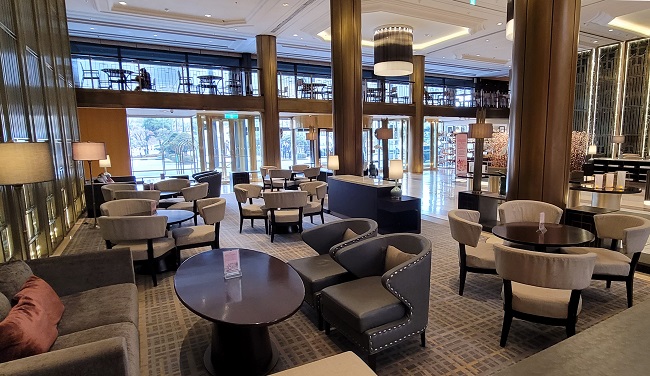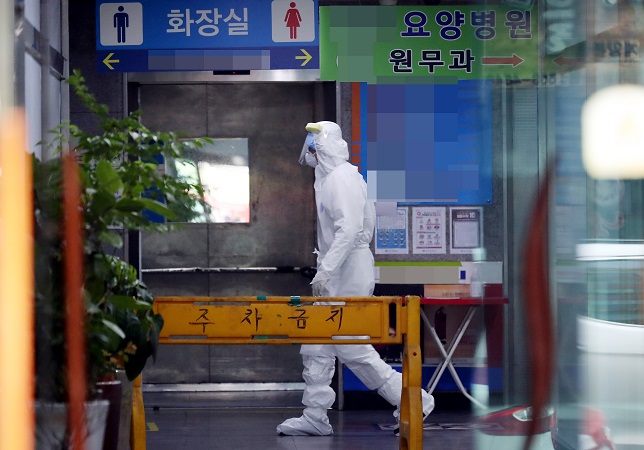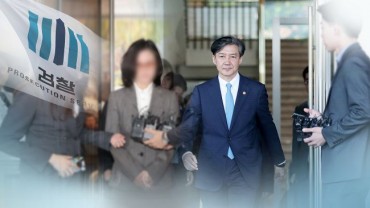
The lobby of a high-end hotel in Seoul is empty on Jan. 4, 2021, amid tough social distancing guidelines for COVID-19. (Yonhap)
SEOUL, Jan. 5 (Korea Bizwire) — The third wave of the COVID-19 pandemic in South Korea appears to be slowing down with the help of tough restrictions ahead of the holiday season, but concerns remain over continued cluster infections at virus-prone facilities and a more transmissible virus variant, health authorities said Tuesday.
The country added 715 more COVID-19 cases, including 672 local infections, raising the total caseload to 64,979, according to the Korea Disease Control and Prevention Agency (KDCA).
Tuesday’s daily caseload marks a sharp fall from 1,020 on Monday and is below the average daily number of new cases, which stood at 894 over the past week.
Twenty-six people died from COVID-19 in the past 24 hours to raise the death toll to 1,007, surpassing the threshold nearly a year after the nation reported its first confirmed virus case on Jan. 20, 2020.
Later in the day, health authorities and local governments said 738 new cases were confirmed from 12 a.m. to 9 p.m. Tuesday, 146 more than in the same period Monday. The greater Seoul area accounted for 72.8 percent with 537.
In a separate tally by Seoul, the capital city reported 248 additional patients from 12 a.m. to 9 p.m. Tuesday. It marked a sharp rise from 177 posted in the same period the previous day, though it dropped from 365 posted a week earlier.
The newly identified cases found on the day will be reflected in the official tally announced Wednesday.
To cope with the largest-ever pandemic, health authorities have extended the Level 2.5 distancing measures — the second highest in the five-tier scheme — for the greater Seoul area and Level 2 for the rest of the country until Jan. 17.
Private gatherings of more than four people are also banned across the nation during the designated period.
Health authorities said the virus curve has been slowly flattening thanks to preemptive testing and social distancing rules but remained cautious over continued group infections and the possibility of a virus resurgence in the winter season and spread of the new virus variant.
“Preemptive testing and social distancing measures are slowly but surely showing their effectiveness,” Sohn Young-rae, a senior health official, said.
“The current (pandemic) is seen to be balancing out or slowly declining after reaching a peak. In consideration of the current widespread numbers of local infections, while the virus curve is expected to flatten, it will be slow.”
Despite the still high number of new cases, authorities said the third wave of the pandemic is at a manageable level, citing the daily average of new cases, group infections and the reproduction rate that stood below 1 last week.
A reading below 1 means that the virus transmission tends to be slow.
As part of efforts to prevent the spread of the more tranmissible variant, South Korea has been tightening restrictions on the entry of foreigners.

A medical worker walks in a hospital in Incheon, west of Seoul, on Jan. 4, 2020, which reported 48 COVID-19 cases. (Yonhap)
South Korea on Tuesday reported two additional cases of a coronavirus variant first reported in Britain, which raises the total to 12, including a case from South Africa.
Starting Friday, foreigners arriving at South Korean airports must present a negative coronavirus test taken within 72 hours before their departure to the nation, the KDCA said.
In response to growing complaints over the prolonged restrictions on indoor sports facilities, authorities called for the public and business owners to be a little more patient and cooperate with the social distancing guidelines to contain the highly contagious virus.
A growing number of gym owners have reopened their businesses this week in defiance of the government’s virus restrictions, claiming the rules are unfair and put their livelihoods at stake.
Of the 672 newly identified local infections announced early Tuesday, 193 cases were reported in Seoul and 214 cases in Gyeonggi Province that surrounds the capital. Incheon, west of Seoul, reported 48 more cases.
A fifth round of COVID-19 testing at a prison in eastern Seoul has discovered new cases, raising the total to 1,090.
An additional 49 cases were linked to a hospital in Incheon, 80 kilometers west of Seoul, and 68 new cases were found in another hospital in Gwangju, 330 kilometers south of Seoul.
Dozens of new cases were also identified from activities in several churches in the Seoul metropolitan area.
The number of seriously or critically ill COVID-19 patients reached 386 Monday, compared with 351 from the previous day.
The total number of people released from quarantine after making full recoveries stood at 46,172, up 932 from the previous day.
(Yonhap)






